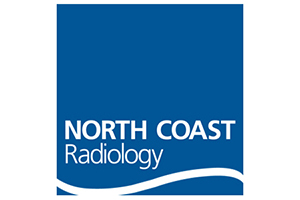Elderly patients are frequently admitted to hospital as the result of polypharmacy. Medications are reviewed and many are able to be stopped.
The list of medications that can cause problems is long. Anticholinergics, antispasmodics, antidepressants and anti-parkinonsian medications are frequent offenders. So too are sedatives and narcotics.
Unfortunately for the GP when patients return after hospital discharge they reportedly find life intolerable due to pain and/or severe insomnia. Despite the warnings medication is often restarted and the cycle begins again.
Dr Tien Khoo, staff physician at Ballina District Hospital, sees this cycle all too frequently. In this article he recommends the "7 step medication review" plan to break or at least slow the cycle.
Concurrent with the evolution of modern medicine practitioners are increasingly caught up in a career that is rife with guidelines and recommendations. Though well-meaning, many of theses are led by specialist groups and institutions that focus (understandably) on a particular condition. Things are then left to the astute clinician involved in the decision-making process of clinical management, often followed by safe prescribing.
The commencement and continuation of medication on the basis of primum non nocere (‘first do no harm’) requires careful consideration of the information at hand. Ideally, information that feeds into our clinical reasoning processes should involve core components of the clinical history, examination, investigation results, intended benefit and most importantly, patient preferences. In addition, I suggest reflecting on the available evidence and the patient’s time horizon.
Polypharmacy is a common outcome in today’s medicine; the use of multiple medications in the quest to help our patients. Polypharmacy can be deemed as appropriate or inappropriate. It is the responsibility of both, treating health professional(s) and patient, to help determine if intended benefits of treatment outweigh the risks and adverse effects.
‘Polypharmacy is here’ in our everyday practice and the ageing population in the region will be more susceptible to inappropriate prescribing. A recently published Australian study found at least one-in-three of older Australians are subject to polypharmacy, with figures rising to almost 50 per cent in the oldest of the old1. Another recent article in GP Speak highlighted the benefits of deprescribing that led to both patient and staff satisfaction, following sedative reduction in residential care2. With strategic reduction in sedatives such as benzodiazepines and antipsychotics, patients were more able to participate in activities of daily living and were more likely to have a better quality of life.
To help us reduce inappropriate prescribing and achieve appropriate polypharmacy (i.e. ‘safe prescribing’), the Scottish government has recommended ‘The 7-steps medication review’, which comprises the following3;
- Step 1: (Aim) What matters to the patient?
- Step 2: (Need) Identify essential drug therapy
- Step 3: (Need) Does the patient take unnecessary drug therapy?
- Step 4: (Effectiveness) Are therapeutic objectives being achieved?
- Step 5: (Safety) Is the patient at risk of adverse drug reactions (ADRs) or suffers actual ADRs?
- Step 6: (Efficiency) Is the drug therapy cost effective?
- Step 7: (Patient-centred) Is the patient willing and able to take drug therapy as intended?
Other worthy steps that I suggest considering when prescribing include ensuring an ideal medication dose and remembering the basic sciences (e.g. pharmacology, physiology, pathophysiology) that may influence the likelihood of an intended benefit.
We are practicing medicine in exciting times. The pace that medical knowledge advances has provided us with a myriad of treatment options in various ailments while causing textbooks to be nearly obsolete! Thinking laterally beyond the hardcovers, I am also conscious that safe prescribing practice is especially important in an ever-increasing litigious environment that continues to take the hide off those in the pharmaceutical industry without always sparing the prescriber.
References:
- Polypharmacy among older Australians, 2006–2017: a population‐based study, Page et al. Med J Aust 2019; 211 (2): 71-75
- Sedative reduction improves resident care and staff satisfaction. Dr Breen J. 1st September 2019. GP Speak
- Scottish Government Polypharmacy Model of Care Group. Polypharmacy Guidance, Realistic Prescribing 3rd Edition, 2018. Scottish Government
















